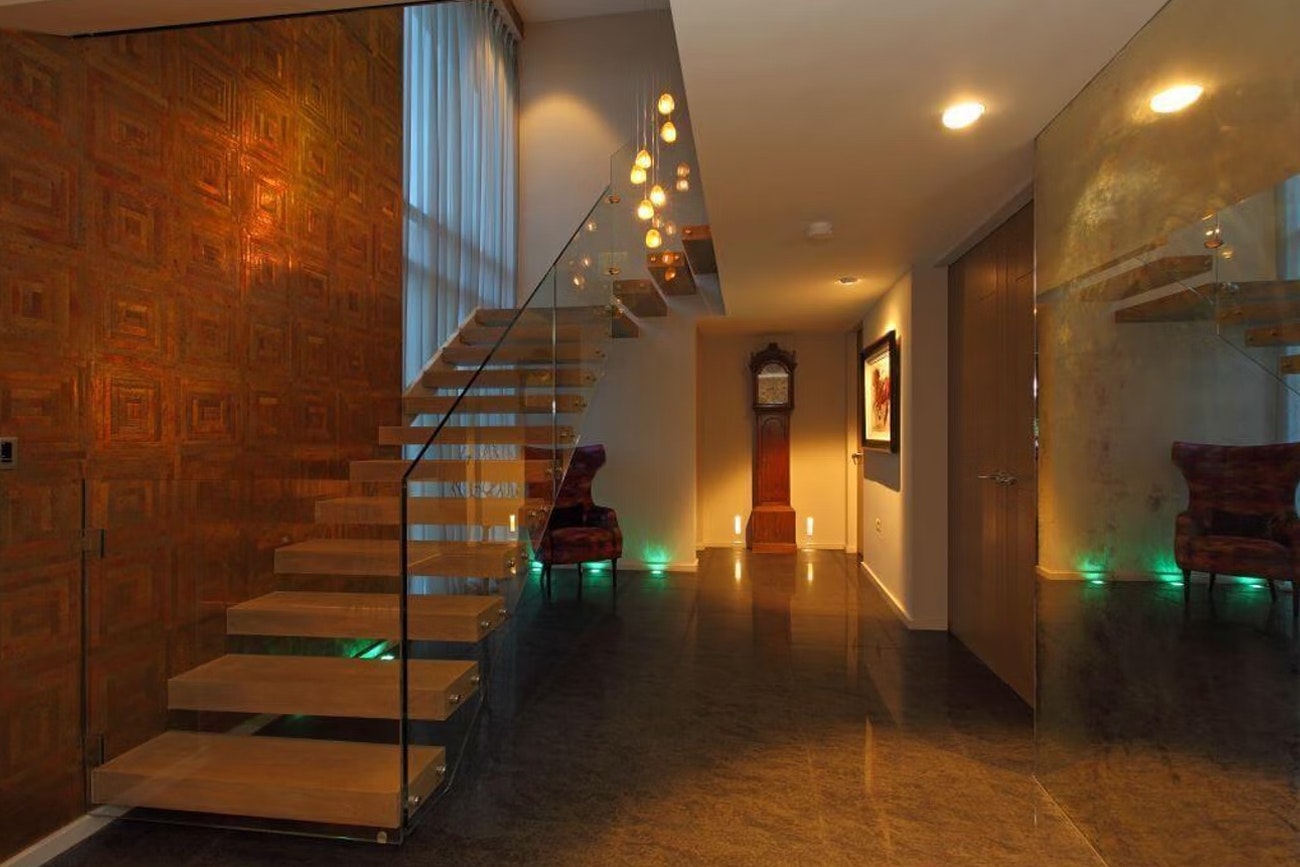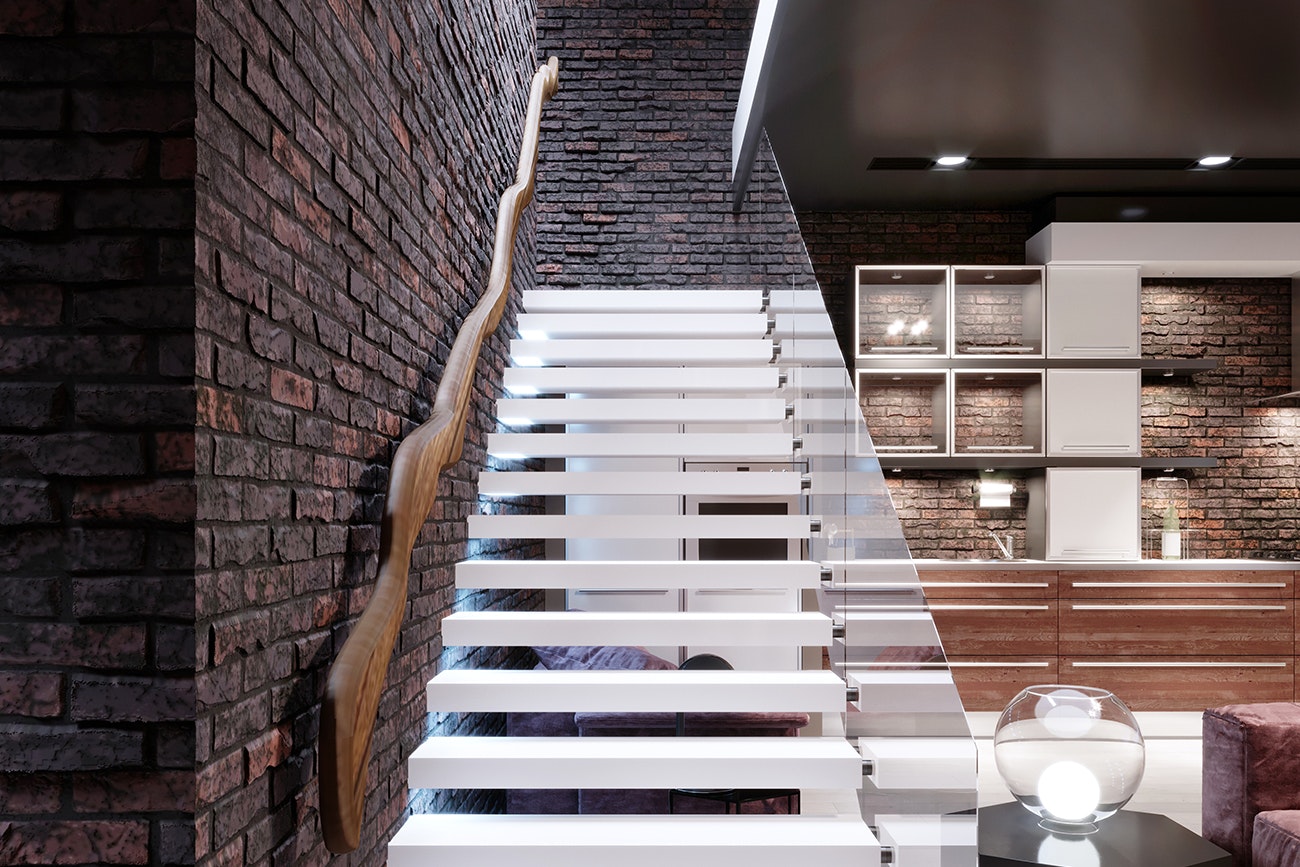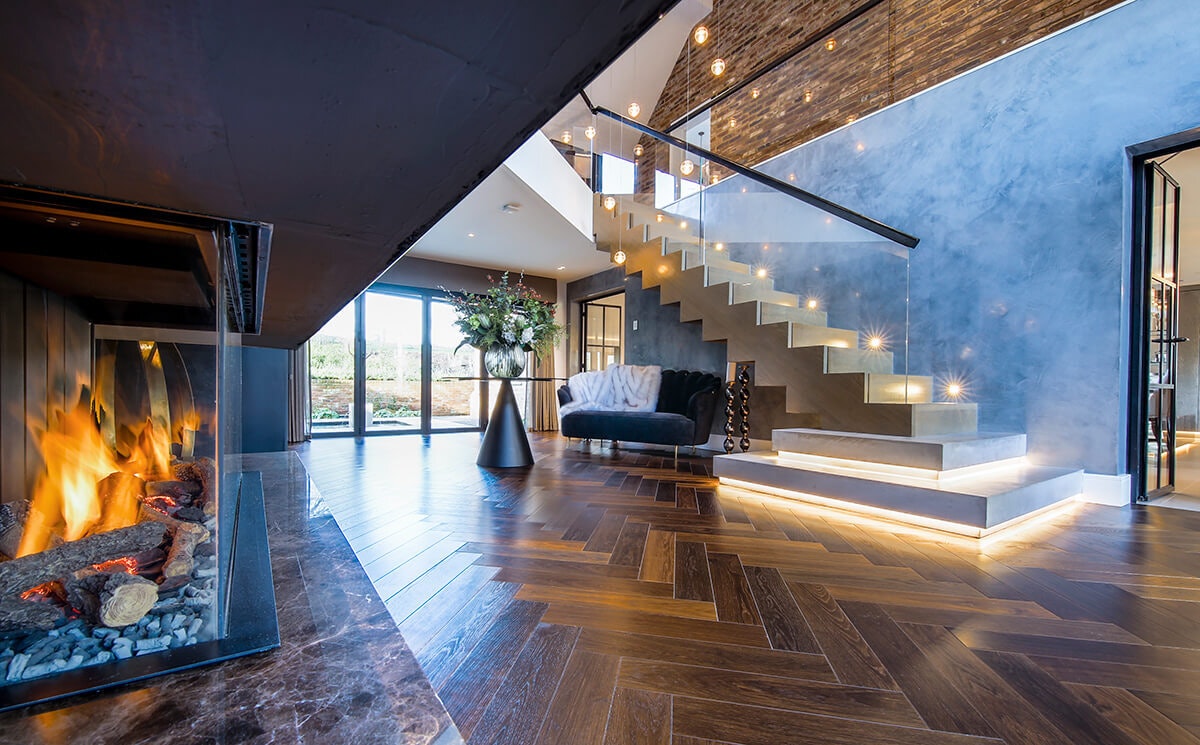
Illuminating Elegance: Hampshire Light's Fabric Collection for Blinds and Curtains
When it comes to transforming your living spaces, the right choice of fabrics for blinds and curtains can make all the difference.
Blog

Author: Bradley Devenish
Staircases are the central pod in most buildings. They provide an essential function by linking areas and people together while contributing to the aesthetics of the space. In fact, staircases are usually one of the first integral parts laid out during new constructions and often dictate the layout of an entire property.
Given their importance, you should look to enhance your staircase with decorative and functional features – and stairway lighting does this exceptionally well. Not only can stair lighting design improve the looks of your staircase and the wider area, but it serves a real purpose in terms of safety.
This article explores how to light your staircase effectively to ensure you get the most from your indoor space.
When it comes to stair lighting ideas, there are two initial decisions to be made:
The answers to these will vary based on your staircase design and what you’re looking to achieve.
For example, if you’re looking to hang pendants above the staircase, choose a height that doesn’t drop below 7 feet to avoid injuries – nobody wants to hit their head on overhead stairwell lights. If the available space doesn’t permit hanging fixtures, opt for a flush, recessed light instead.

Remember, there are three lighting types that you can use in your staircase. In fact, it’s the same in any room of the house. You’ve got these main types to consider, and while you don’t need to include all of them, you have the option of doing so if your home and lifestyle warrant it. Here are the three lighting types to consider.
This is the lighting used for general purposes. The whole reason for ambient lighting is to fill the room with as much appropriate light as possible. That doesn’t mean it needs to be ultra-bright, but you’re trying to provide an even light throughout the room.
This type of lighting is installed for specific tasks. For example, you would use more lighting in the kitchen above the areas where you prepare food. In the staircase, task lighting might be more about guiding the way. So, rather than turning on all of the brighter ambient lights in the staircase, you might have LED stair lights or something similar along the walls or even closer to the floor. This would allow people to find their way safely down the stairs in the middle of the night without turning on harsh, bright staircase lighting.
Accent lighting highlights certain architectural or decorative features of a space. You may not think there is much cause for accent lighting on a staircase, but it depends on the home. If you have a wide staircase with artwork along the walls, you may use staircase wall lighting to highlight the hanging artwork.
As we mentioned, not every home needs all three lighting types on the staircase, but it can certainly add a touch of elegance and class.
Due to the different types of lighting for stairwells in the home, it’s a good idea to plan before building. Of course, you can always add lights later, but if you work with a specialist lighting designer from day one, you won’t have anything to worry about.
If you have a lot of stairwell lighting ideas, have them ready before meeting with your architect and/or interior designer. If you are an interior designer, it’s still a great idea to consult a lighting design expert. This ensures you don’t have to backtrack and retrofit lights at a later stage. Everything is much easier while new builds or renovations are happening.
Remember, it’s not just about putting a few downlights in the ceiling. Excellent lighting design incorporates everything, so you’ll need to plan your ambient, task and accent lighting simultaneously.

Lighting design is a great way to add some class, elegance and a sense of luxury to your home. Of course, much of this article focuses on stairwell lighting, but the principles apply anywhere. A well-lit staircase is vital for safety, but there is so much more to it than that.
Choosing the right lights for staircases can enhance the space, make it feel bigger, and make it safer. Let’s look at a few reasons you should pay special attention to indoor stair lighting.
Safety is perhaps the number one reason you need lights on stairs - indoor stair lights provide the guiding light to make your way down or up the stairs comfortably. If you’ve got family members sleeping upstairs and they enjoy coming downstairs for the occasional midnight snack, they will definitely appreciate the extra lighting!
But you don’t need to wake everybody else in the house up by turning on a heap of corridor and staircase lighting. You can even consider stair lights with a motion sensor. These will only turn on when movement is detected, and it doesn’t always need to be your bright ambient overhead lights.
Think about other staircase lighting ideas, such as LED strips emitting cool light. The steps will be well-illuminated without you being blinded by harsh light.
Naturally, lighting design takes into consideration the aesthetic appeal of the house. The idea is to make all parts of the home look even better than they already are. The staircase gets used frequently in most homes, so it’s worth putting some effort into how it looks. After all, a beautiful space always feels more liveable.
Whether it’s accent lighting for wall mirrors or artwork or simple recessed lighting to add some more illumination, you can change a lot about your staircase with the right type of lighting.
Another aspect of any lighting design project is to ensure a healthy lighting environment. When talking about healthy lighting, we refer to the lighting that works well with your circadian rhythm. In an office environment, healthy lighting would encompass a lot more, such as using natural light to avoid headaches and lethargy that often come from artificial lighting. But staircases are different.
You don’t spend vast amounts of time in your staircase – it’s more of a ‘passing through’ area. But you still want it to be healthy. Consider smart home lighting systems that allow you to dim lights. Or include task lighting, as we mentioned before. Less intense lights aid walking up and down stairs at night, but harsh lights can wake others up.
You can light your staircase in a variety of ways. The manner you choose will again depend on any architectural constraints and personal preferences. Here are three main ways to incorporate lighting into your staircase.
1. Wall lighting
Most staircases are adjacent to at least one wall, making this a favourable option for many homes. Walls also provide an easy way to wire the lights, creating a seamless look and smooth installation.
Recessed and mounted spots are popular stair lighting choices, usually installed between 15 and 20cm above the steps. Not only do they look incredibly flush and subtle, but they provide adequate low-level lighting for your stairs and can create stunning effects too.
There are many ways to use wall lighting effectively, and we can’t ignore the possibility of colours. While colour-changing LEDs might not be for everyone, it is possible and can be used to programme a spectacular range of variations to suit your mood.

Step lighting often takes advantage of the nooks, crannies, bends and edges in your staircase to conceal the LED fitting and plot a textured lighting scheme. You can install lights horizontally on the tread or vertically into the riser of your steps, depending on the look you’re trying to achieve.
This way of lighting also provides a fantastic level of safety. By illuminating each step or at even intervals, you’ll create a clear guide for people going up and down the stairs at darker hours.

Another option when lighting your staircase is to add a light strip along the length of your handrail or bannister. While doing so can provide a dramatic focal point in the dark, it won’t be enough focused light to ensure sure-footed stair climbing. So, you can pair this lighting method with one mentioned above, and you’ll benefit from both a decorative and functional staircase.
Hampshire Light has over 25 years of experience creating elaborate lighting schemes for homes throughout Hampshire and surrounding counties. We work with interior designers, builders, architects and other professionals to create a luxury lighting design for modern homes.
If you’re looking to enhance your staircase and overall home lighting, contact us today to discuss your individual requirements with one of our lighting design specialists. We can recommend you the very best solution for your budget.
When it comes to transforming your living spaces, the right choice of fabrics for blinds and curtains can make all the difference.
More info
Whether you’re buying a new home, or planning on renovating, lighting should be considered from the start. However, before you rush into things and start purchasing fixtures online, it’s a good idea to fill any missing answers to questions you may have.
More info